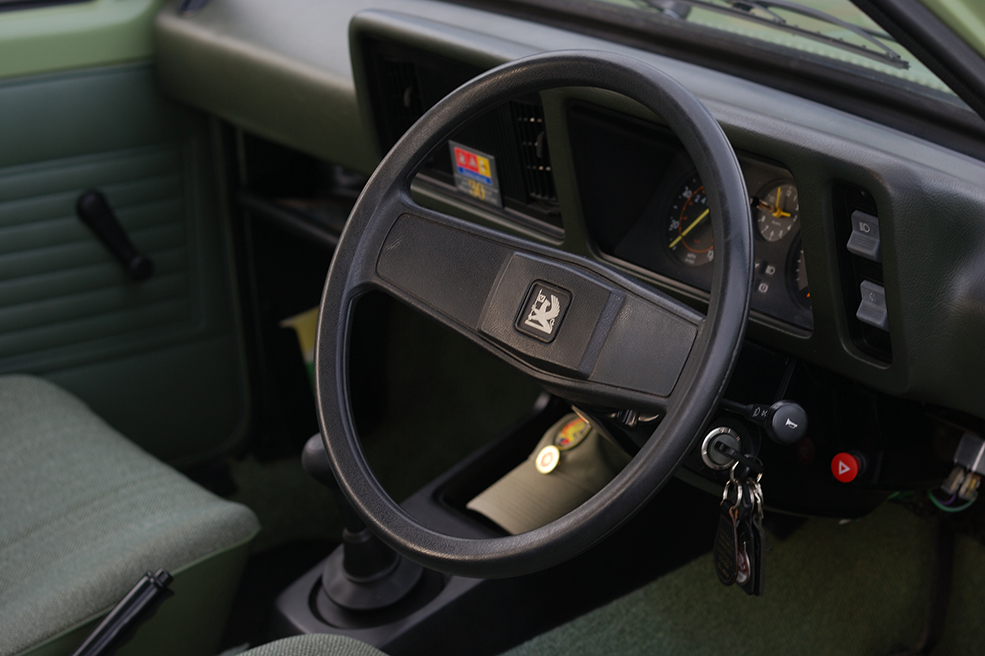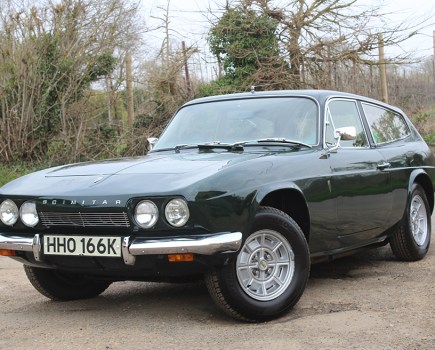The Vauxhall Chevette doesn’t quite get the plaudits that it deserves but we think it’s a great classic car. Here’s how to buy
Words: James Bowers
These days, it often feels as though the only blue-collar classic cars that people are interested in are those with a Blue Oval slapped on the bonnet. Ford hype is nothing new in the UK, with Escort and Sierra prices continually soaring upwards, but amongst the furore there are plenty of other humble classics that get drowned out of memory. One such car that we think is worthy of a bigger slice of the limelight, is this, the Vauxhall Chevette.
At first glance, it probably isn’t a car that grabs the attention, but stand it next to a blocky base-spec Mk2 Ford Escort, or any rival that British Leyland could throw at it, and the Chevette with its Firenza-inspired ‘droop snoot’ front end looks positively unique.
The fresh new image for Vauxhall also happened to coincide with a fresh new approach to car production for the brand. Under the ownership of General Motors, Vauxhall was given access to GM’s Global ‘T-Car’ platform. The idea was that Detroit would come up with a standardised base chassis for small-medium sized vehicles, which could then be built upon with different bodywork. This spawned creations from Chevrolet, Opel, Holden, Isuzu – and of course – Vauxhall, who came up with the Chevette. Nowadays though, platform sharing has become the norm, so this car really was a bit of a trend setter.
The engineers at Luton didn’t make it easy for themselves though. GM’s basic platform was optimised for saloon cars, but Vauxhall were keen to build a hatchback instead. Consequently, 11 inches was removed from the rear of the car, and to make up for the loss of structural rigidity, a crossmember was fitted underneath the back seats. Aside from borrowed bits from the States though, the rest of the Chevette package wasn’t particularly revolutionary. The engine was the same relatively sluggish 1256cc unit that you could find under the bonnet of a 1971 Viva, as was the transmission. But on the plus side, there was independent front suspension as well as rack and pinion steering to enjoy, contributing to a set of driving dynamics which were praised by road testers at the time.
Unquestionably though, the Chevette lacked horsepower, at least it did until the HS arrived – a wide-bodied homologation special, which came about due to Vauxhall’s rallying exploits. Considered to be one of the very first hot hatches, it was a truly ground-breaking performance car. Unfortunately, that means that it is also rather valuable these days, so let’s focus back on the standard Chevette, which will be much kinder to your bank balance. Oh, and if hatchbacks aren’t your thing, no worries. From 1976, a year after the Chevette hit showroom floors, saloon and estate variants were spawned, perhaps in an attempt to live up to Vauxhall’s marketing claim that the little family car could be, “whatever you want it to be”.

Engine and transmission
Producing just 58bhp, it might not have been particularly quick, but the Viva-sourced engine was at least a simple thing to work on and maintain. Plus, given its age as a design and use in previous models, all of its little niggles had long since been ironed out before coming to the Chevette. For that reason, reliability was never something to worry about, and it made parts easier to find at the time too, though fast forward 40 years or so and that perhaps isn’t quite the case anymore.
Like any engine however, things can go wrong. So, to make sure you don’t end up in a cloud of smoke on the hard shoulder, there’s a few things to look out for. When on a test drive, keep an ear out for any rumbling of bearings or rattling timing chains, as these are common faults. Piston rings can be prone to wearing out as well, so make sure there’s no (additional) lack of performance, or any thick fumes spouting out of the exhaust.
Furthermore, if originality isn’t something that you’re too concerned about, the engine is a key element of the car that you might want to consider enhancing, whether that be via upgraded parts or a full swap of the block. In modern traffic, the standard Viva unit just isn’t really up to the task.
Another thing copy-and-pasted from the Viva was the Chevette’s transmission. Just like the engine block, the tried and tested nature of the gearbox was a big upside for the car. If well-maintained, these parts can last a lifetime, so they shouldn’t be of major concern.
Don’t worry too much if the transmission seems noisy during your test drive – that was the case at the best of times due to some lacklustre refinement. However, if the synchromesh is worn and changing gear feels difficult – or if the car is jumping out of gear, even – then prepare for a repair or replacement job.

Bodywork
Show me a British car from the 70s that doesn’t rust, and I’ll show you a hen’s tooth. Yes, it’s common knowledge that cars of this age don’t fare particularly well against the elements, and this is particularly true of early Chevettes.
You should have less of an issue with later examples, but nevertheless it’s always worth checking several key areas for any signs of corrosion. Sills and wheel arches are often the primary offenders, though be sure to also check the wings and any joints between panels.
The front valance is worth looking at too, as are the floor pans. As for the estate variant, you’ll want to have a gander at the state of the boot lid.
Suspension, steering and brakes
With double wishbones at the front and a live rear axle at the rear, the Chevette’s suspension set-up was perfectly good for the era it was built in. To this day, the car can be considered one that holds the road well, especially if adorned with a modern set of tyres.
For the most part, the Chevette’s simplistic but effective suspension set-up doesn’t tend to be a weak point. However, on the test drive, take note of any unpleasant sounds that arise when different corners of the car come under load. Obvious mechanical noise in such scenarios would suggest that the car’s underpinnings may require attention.

Interior
Where other cars in Vauxhall’s range appealed to older clientele, the Chevette was popular amongst younger folks. This was reflected in the interior, which could be optioned in an array of different colours, compared to the more sombre greys and blacks of the Viva, for example.
Although it can definitely be suggested that the Chevette’s interior was a nice place to sit, like any car priced within the budget of young people or families, there wasn’t much in the way of luxury. There’s no leather to be seen here, and the use of electronic creature comforts can be described as minimal at best. From the perspective of a classic car buyer though, that’s typically a good thing.
There isn’t much inside these cars to have broken or gone wrong over the years, while the cloth and vinyl surfaces used are deemed to be pretty durable. That said, if there is something wrong with the interior (a torn seat or a missing bit of trim, perhaps), it may be difficult to remedy. Spare parts and fabrics are few and far between, and most are snapped up by serious restorers.
Vauxhall Chevette: our verdict
A Chevette HS will typically demand serious money, but the standard car is thankfully still far more attainable. If you’re handy with tools and don’t mind having to rely on a bit of elbow grease, a project car can be very cheap – and certainly less pricey than the typical Blue Oval alternative.
The Vauxhall Chevette remains an attainable classic, even despite the price rises that we have seen across the market over the past couple of years. With only around a thousand left in existence, these cars aren’t quite as endangered as other more exotic classics, although you would still certainly stand out at your local show.

















